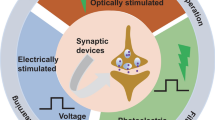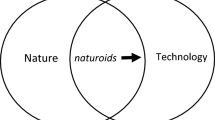Abstract
This article briefly introduces the artificial-brain-building paradigm developed at the Advanced Telecommunication Research Institute International (ATR). The ATR Artificial Brain Project consists of two related themes: dedicated hardware and psychodynamic architecture. The first theme includes work on the theory of pulsed paraneural networks (PPNN), experiments with q-cellular automata, and studies toward a post-FPGA technology for 3-dimensional evolvable elastic circuits. The second theme involves an original version of the psychodynamic theory of mind, investigating dynamics phenomena in simulated working memories (MemeStorms), testing the behaviors of psychodynamic robots, and building of an environment for growing intelligent systems.
Similar content being viewed by others
Author information
Authors and Affiliations
Corresponding author
Additional information
This work was presented in part at the 8th International Symposium on Artificial Life and Robotics, Oita, Japan, January 24–26, 2003
About this article
Cite this article
Buller, A. From q-cell to artificial brain. Artif Life Robotics 8, 89–94 (2004). https://doi.org/10.1007/s10015-004-0294-8
Received:
Accepted:
Issue Date:
DOI: https://doi.org/10.1007/s10015-004-0294-8




